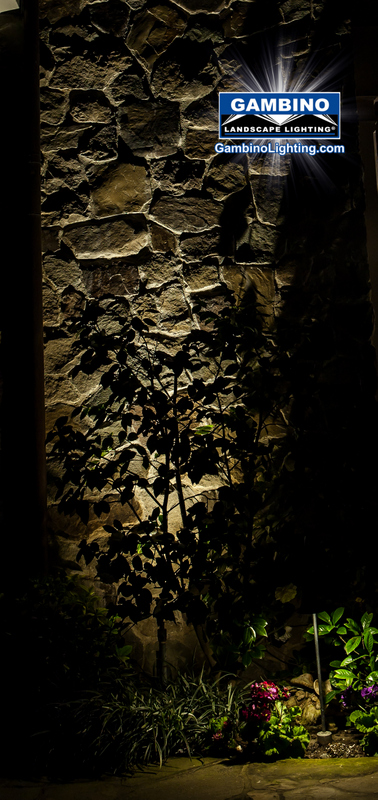12 Jun Proper LED Landscape Lighting System Design and Installation is Critical !
By Mike Gambino
 Investing in Good quality equipment is very important. But Good equipment, poorly designed and installed, will perform poorly. This means wasted energy and higher electric bills. Plus it means mechanical problems and shorter equipment life resulting in nuisance failures when you need the system the most like during parties and events, and result in higher maintenance and overall operating cost of ownership over the long run.
Investing in Good quality equipment is very important. But Good equipment, poorly designed and installed, will perform poorly. This means wasted energy and higher electric bills. Plus it means mechanical problems and shorter equipment life resulting in nuisance failures when you need the system the most like during parties and events, and result in higher maintenance and overall operating cost of ownership over the long run.
Here are some facts about the importance of proper design and installation of Low Voltage LED landscape Lighting systems.
Proper Equipment Sizing
During system design a proper balance needs to be struck between system performance and energy consumption. Installing LED lamp’s that are too bright will result in hot spots and an undesirable waste of energy and higher electric bills
Installing undersized LED’s will result in lack luster lighting system performance.
Installing costly LED’s that are designed to last several years and having to replace them before they burn out is costly and wasteful when plant materials grow and require a higher brightness level or light beam spread as a result. So what is the answer to this?
LED’s with adjustable brightness levels and light pattern spreads- Unlike fixed brightness/beam spread lamps, adjustable brightness/beam spread lamps can be adapted to the constantly changing garden. Several brightness levels and beam spreads are possible all within the same lamp. This saves money in the long run and waste from disposing of LED’s that still work but no longer suit the needs of that particular application in the landscape.
Appropriate Cable Sizing- Cable gauge sizes that are too small restricts the flow of power from your low voltage lighting transformer to the fixture and produces more heat which results in more energy loss and electrical usage with higher electric bills.
Proper system operating Voltage- Although there are some touting operating voltage ranges of 8-18 volts for low voltage LED lamps. However the optimum operating voltage for predictable performance and longevity is 12 volts. operating these lamps at Higher than rated voltages will produce more light and consume more electricity with a potential degradation of lamp life and lower voltages will produce less light and also carry the potential to lessen lamp life.
Spotty unnatural lighting that doesn’t make you feel comfortable in that space
Not enough fixtures-When less than sufficient fixture quantities are originally specified in an attempt to save money just the opposite results. Once the system is on and it is realized that more fixtures are needed in a given space most times it is not as simple as just plugging in a few more fixtures and attaching them to the existing cable. The addition of fixtures may require an alteration of existing fixture spacing and movement of previously installed fixtures, conduit and cable to accommodate the changes. Voltages will also need to be adjusted and balanced not only in the specific areas where the additions took place but on the entire system that is attached to the affected transformers.
Yards illuminated light a ball field with no drama or contrast- Unlike sports fields that require high intensity lighting installed high and away that results in flat and even lighting to replicate daylight from the sun. Dramatic garden lighting is accomplished by strategically installing multiple fixtures and lamps at different angles relatively close to their subjects with the most pleasing varying brightness levels and light spreads to accentuate subjects. This is all accomplished with attention to managing glare control.
Glaring light- When improper fixtures and lamps or insufficiently shielded ones chosen for the application and poorly placed the result is glaring uncomfortable light. No one wants to be in a space for too long with light shining into your eyes. Instead of being a place of relaxation and enjoyment this because very uncomfortable and unsettling.
Poor and non weatherproof fixture Connections- Most wire connections are not made with tight and weatherproof products. What happens over time is connections become loose, which create excessive heat that can melt cable. Moisture gets inside the sheathing and contaminates and oxidizes copper strands which result in less voltage getting to the fixture lamps. Voltage starved Lamps result in reduced brightness and in some cases intermittent operation. Sometimes they work and sometimes they don’t.
Exposed cable- Lighting Cable that is laid on the ground and covered with mulch or direct buried in the ground or inside sprinkler trenches is a problem waiting to happen. Digging, rodents, roots can all damage cable resulting in unneeded service calls and costly repairs. The worst damage occurs when cable is chopped and not completely severed. Voltages leaks into the ground instead of getting delivered completely to your lamps. Water gets in and system performance suffers little by little until the cable fails turning off your lights completely or intermittently. And this usually happens at the most inopportune times like right before a party or event. This can be prevented when cable is installed inside of rigid PVC conduit.
 This landscape lighting blog is published by Mike Gambino of Gambino landscape lighting inc. all rights reserved. Mike is a professional landscape lighting system designer/ builder and has been designing, installing and maintaining landscape lighting systems for more than 20 years. Mike resides in the Los Angeles area with his wife and 2 sons. To visit his website go to www.Gambinolighting.com . To inquire about hiring Mike please click here .
This landscape lighting blog is published by Mike Gambino of Gambino landscape lighting inc. all rights reserved. Mike is a professional landscape lighting system designer/ builder and has been designing, installing and maintaining landscape lighting systems for more than 20 years. Mike resides in the Los Angeles area with his wife and 2 sons. To visit his website go to www.Gambinolighting.com . To inquire about hiring Mike please click here .
Blog articles may be published with permission on other websites without editing or removing links.



No Comments